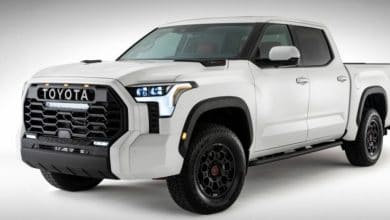
Over the past few years, the sport utility vehicle category has grown tremendously in popularity; it even outsold car sales to such an extent that some manufacturers dropped them from their lineup over the years. In many cases, SUVs tend to provide a sense of security to the occupants who take place in them, but is this always really the case? To this question, the IIHS (Insurance Institute for Highway Safety) has just updated one of its crash tests and this has revealed that occupants sitting in the second row of seats in an SUV could be seriously injured.
Adding a factor during tests
In order to put itself in situation, last year, the American agency responsible for the collision tests (IIHS) decided to update its frontal collision tests, in moderate overlap, by adding another factor. This is the addition of a passenger to the second row of seats, a dummy simulating a child of approximately 12 years. As a result of this change in testing, the agency moved the test to 13 SUVs. To his surprise, only 4 SUVs obtained the “good” rating, which represents a major shortcoming for occupant safety.

It is important to note that, during these tests, 4 ratings are possible: good, acceptable, marginal or poor. In the list, only the 2022 and 2023 Ford Expedition, Ford Mustang Mach-E from 2021 to 2023, Subaru Ascent 2022 and 2023 and Tesla Model Y obtained the “good” rating. Then, the 2022 and 2023 Chevrolet Traverse, the 2022 and 2023 Toyota Highlander, as well as the 2022 and 2023 Volkswagen Atlas obtained the “marginal” rating. And finally, the 2022 Honda Pilot, the 2022 and 2023 Hyundai Palisade, the 2022 and 2023 Jeep Grand Cherokee, the 2021 to 2023 4-door Jeep Wrangler, the 2021 to 2023 Mazda CX-9 and the 2021 Nissan Murano to 2023 finished at the bottom of the rankings with a “poor” rating.
According to an IIHS report, for vehicles from 2007 to present, the risk of fatal injury is up to 46% higher for a person seated in the second row, compared to those seated in front. During these tests, various sensors on the dummies make it possible to analyze whether a real person can suffer injuries in the event of accidents. These simulations are therefore very important and allow you to determine whether the restraints are doing their job.

Upcoming updates
Luckily for us passengers, it’s rare that a manufacturer fails to act on a very poor crash test result. These tests are used precisely to improve our safety on board vehicles. It would therefore not be surprising to see the picture improve over the next few years. However, one model managed to stand out, but in the wrong way. It’s about Jeep Wrangler who flipped completely on his side following an impact on the front corner of the vehicle. It will therefore be a file to follow for this model also on this side, in order to see the improvements that will be made to it.
Until then, we will follow the evolution of the crash test results involving a passenger in the second row of seats. In the meantime, if safety is an important issue for you when buying a new vehicle, know that it is always possible to consult the results of tests carried out on different vehicles, directly on the IIHS website.












